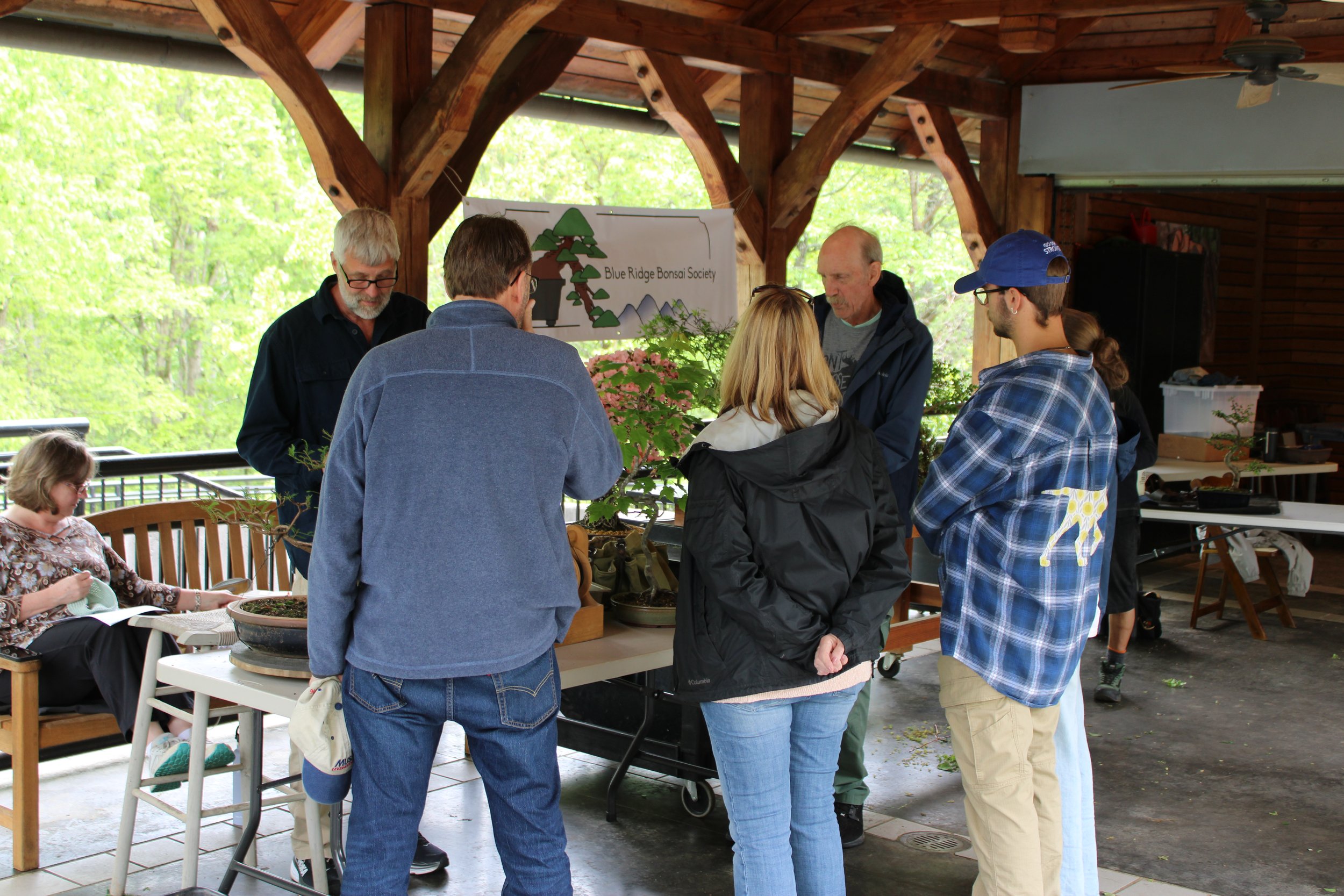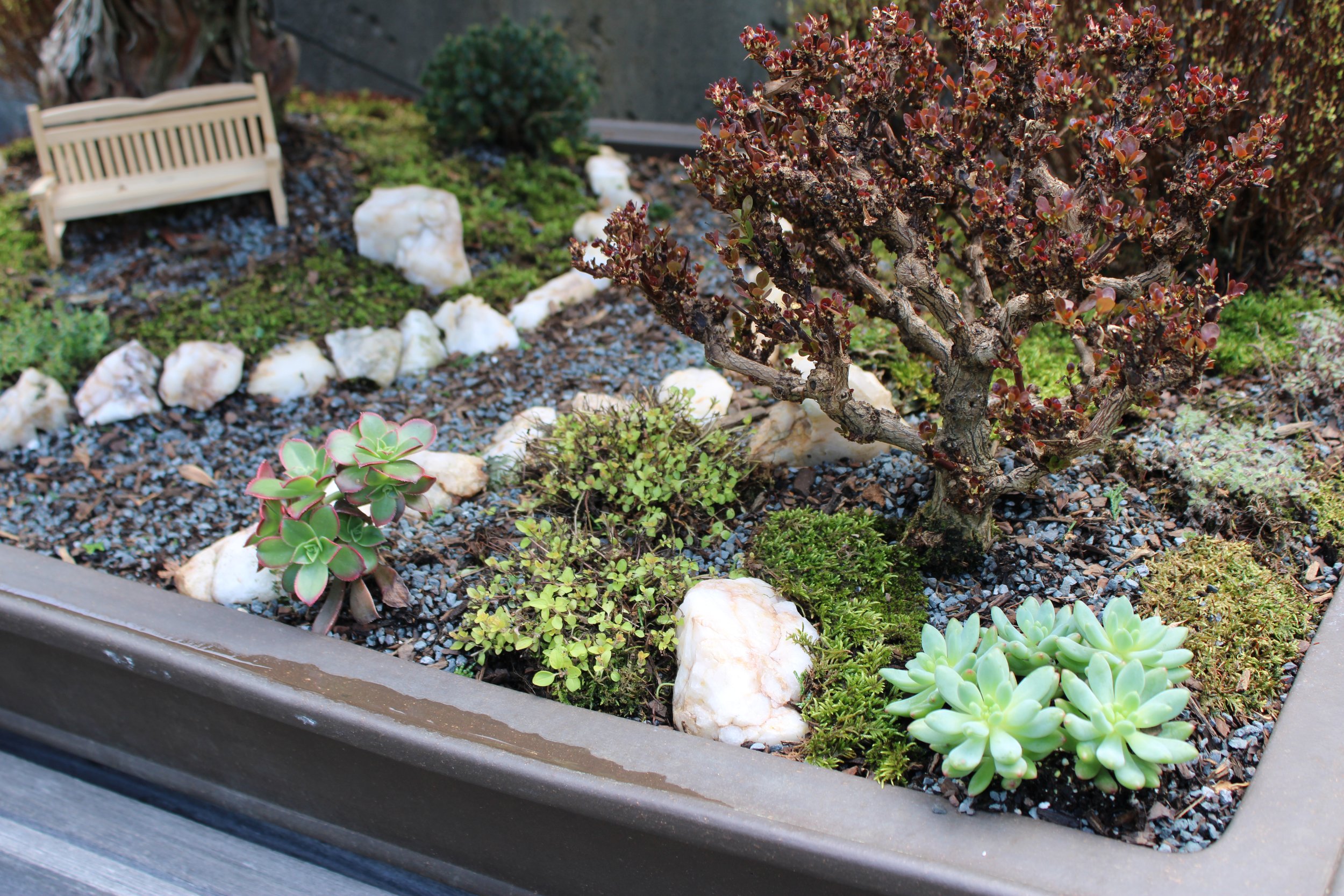Think of a Tree - Part 1, A Tree From Memory
Across the street from my childhood home was a vacant lot. A house once stood there, but it was torn down and the lot remained vacant for many years, so weeds grew and the many children of the neighborhood played there. The lot was on the corner of a block in a suburban town. This was in the 1960s. Around the periphery of the lot, along the two sides bordered by streets, were some trees that remained after the old house was demolished. One of these trees was substantially larger than the others. The tree had one great base that was probably about four or five feet in diameter, which then divided into two trunks at a height of perhaps six feet off the ground. One of these two trunks angled off in the direction of the the vacant lot while the other leaned out over the nearby street, which was called Amboy Road.
Along with my friend David, who lived in the house next door to mine, I took to climbing up into the big tree. To do so required that we affix wooden steps to the tree's trunk. The steps were short scraps of two-by-fours and lesser pieces of wood we found laying about, which we nailed in place horizontally to create purchase for our hands and feet. At the time David and I would have been about seven or eight years old. The steps we made were rickety, but we were little and didn't weigh much so they supported us and allowed us to climb to a height that seemed incredible. We were probably about fifteen feet off the ground. We decided that the trunk leaning toward the lot was David's side and the trunk that leaned over Amboy Road was mine. When we climbed the tree, which for a while was a nearly daily occurrence, David would scramble up to his perch and I to mine, and we would sit like lords overlooking our domain. Even if it was a boring day with nothing going on, to be up in our tree was an adventure because the world looked completely different from up there. We felt special for being so high above the ground.
When not enjoying the lofty view of the earth below, being up in the big tree in the vacant lot created an opportunity to look closely at the big tree itself. You always had to hang on to the tree for safety's sake, so you had your hands on it and your arms around it, and often your face was just a few inches from the tree's grey bark so you studied its textured surface and watched ants crawl by, way up high there in the tree. What strange material the bark was, when you studied it close up — almost like cardboard but not exactly. When you picked at it with a fingernail you could sometimes get a thin piece to peel off and it was bendable. The tree was big and solid and the rough bark all over it seemed hard and scratchy to the touch, but you could peel off parts of the bark and those didn't feel so solid. You could snap the pieces of bark with your fingers.
All around you when you were up in the tree were clouds of leaves. Each leaf had the same intricate shape, the same soothing green color, the same translucent nature that allowed light to pass and created a world of softly shifting green shadow. How many leaves? There was an uncountable number of them creating a great encompassing mass, yet each leaf was separate and distinct. Each one was suspended on its own slender stem, with a thin raised line extending from the point where the stem attached to the leaf right along the leaf's surface, down the middle its entire length until ending at the leaf's pointed tip. Other lines branched out from the central line, going to one side and the other, looking like a sort of little stick figure tree described on the leaf's surface both above and below. The leaf was dark green on the top side while on the bottom it was a lighter shade, the same color as a piece of mint candy. Hold one of those leaves up to your eye and let the light pass through it and you could see a pattern, like a net stretched across the surface of the leaf, similar to what you saw when you looked very closely at your own skin, like leaf and skin were somehow made of the same stuff. The color was different but the surface of the leaf seemed skin-like.
Strange thoughts can arise when you're a little boy up in a big tree on a lazy summer day.
These recollections came back to me after a tour through the bonsai garden that I conducted earlier this week. At one point during the tour I spontaneously asked the people in the tour group to stop for a moment and think of a tree they knew. I asked them to think of a specific tree and not a generic one, an actual tree they personally knew or had at some time known that caught their eye and made a lasting impression. I asked if anyone would share the tree that came to their mind and several people did. One man spoke of a tree that stood right outside the door of a house where he had lived for many years, a tree he saw every single day as he came and went. A married couple told of a certain crooked catalpa tree they used to admire when they took walks down by the river, a tree that subsequently was washed away by the flooding that accompanied the storm last September. Everyone in the group could call to mind a certain tree they knew. In that moment, the tree that came to my mind was the Angel Oak, the magnificent four hundred year old live oak (Quercus virginiana) that lives on John’s Island in South Carolina, near Charleston. That tree is world famous and rightly so. It’s massive and strangely shaped, looking animate even as it sits in stoic silence. I thought of that tree then because I had seen a picture of it on a web site only that morning, and if ever there was a tree to make an impression upon you the Angel Oak is surely one. But later on I thought again about the question of a memorable tree and came up with a different answer, a less dramatic but more personal one.
The tree my friend David and I occupied for a time in the long ago days of our youth was a silver maple (Acer saccharinum). I didn't know that at the time because I was too young then to know much of anything about trees, beyond the fact that there were lots of them around and some were good for climbing. As it happened, it was not until almost thirty years later that I identified that tree, from memory. So clear was my recollection of time spent up in that tree's boughs that I could distinctly recall the look of its bark, the shape of its leaves, the form of its structure. Once I started working at the Arboretum and learned something about plant science, these memories were enough for me to know the tree's botanical identity.
I have to confess, Acer saccharinum is not one of my favorite tree species. I've never planted one because I can think of any number of other tree species possessing what I think of as superior traits. The silver maple that grew in the vacant lot across the street from my childhood home stands out, however, because of my personal experience of the tree when I was a young child who hadn't yet acquired much in the way of plant prejudice. Back then, I encountered and engaged with the big maple as a thing of interest in my environment. The tree had allure in that it was climbable and offered a bird's eye view of the world, but then my interaction with the tree caused me to come to terms with it as a unique entity with its own distinctly recognizable features. That particular silver maple became The Big Tree in The Lot, or Our Tree, as David and I came to think of it. We personalized it. That tree became an individual in our minds — a 'thou' rather than an 'it'.
That was my purpose in asking people on the recent garden tour to think of a specific tree they knew. If you talk about having a personal relationship with a plant people might well look at you with side-eyed concern, yet we all do it on some level. And that one-on-one relationship happens to be a central element of the bonsai construct.
To be continued...
Last Saturday was World Bonsai Day and the Arboretum bonsai were back out on display in the garden. The following are a few images from the weekend, with more images of little trees to come in next week’s entry.
Blue Ridge Bonsai Society president Chris Pazoles greets a guest at the information table.
Blue Ridge club member Greg Hinson does a demonstration for interested visitors.
As part of the festivities, I did a demonstration in which a large, iconic tray landscape in the Arboretum’s collection was repotted. The landscape has the poetic name Aunt Martha’s Magic Garden, and was featured in a Journal entry from year one (read it here). This was the third time this piece has been the subject of a public demonstration, and most notable about this latest outing was the debut of Bonsai Assistant Blaire Caldwell. Blaire’s first day on the job was Tuesday and four days later she was pushed out in front of a boisterous mob, where she coolly did what was needed as if public demonstrations were something she does every day:
How it began. Photo by Chris Pazoles
Photo by Chris Pazoles
Photo by Chris Pazoles
When he wasn’t busy taking photos or talking up guests, Chris Pazoles lent a hand in the demonstration by doing some of the dirty work. Photo by Felix Laughlin
How it ended. The finished planting, back out on display in the garden.













